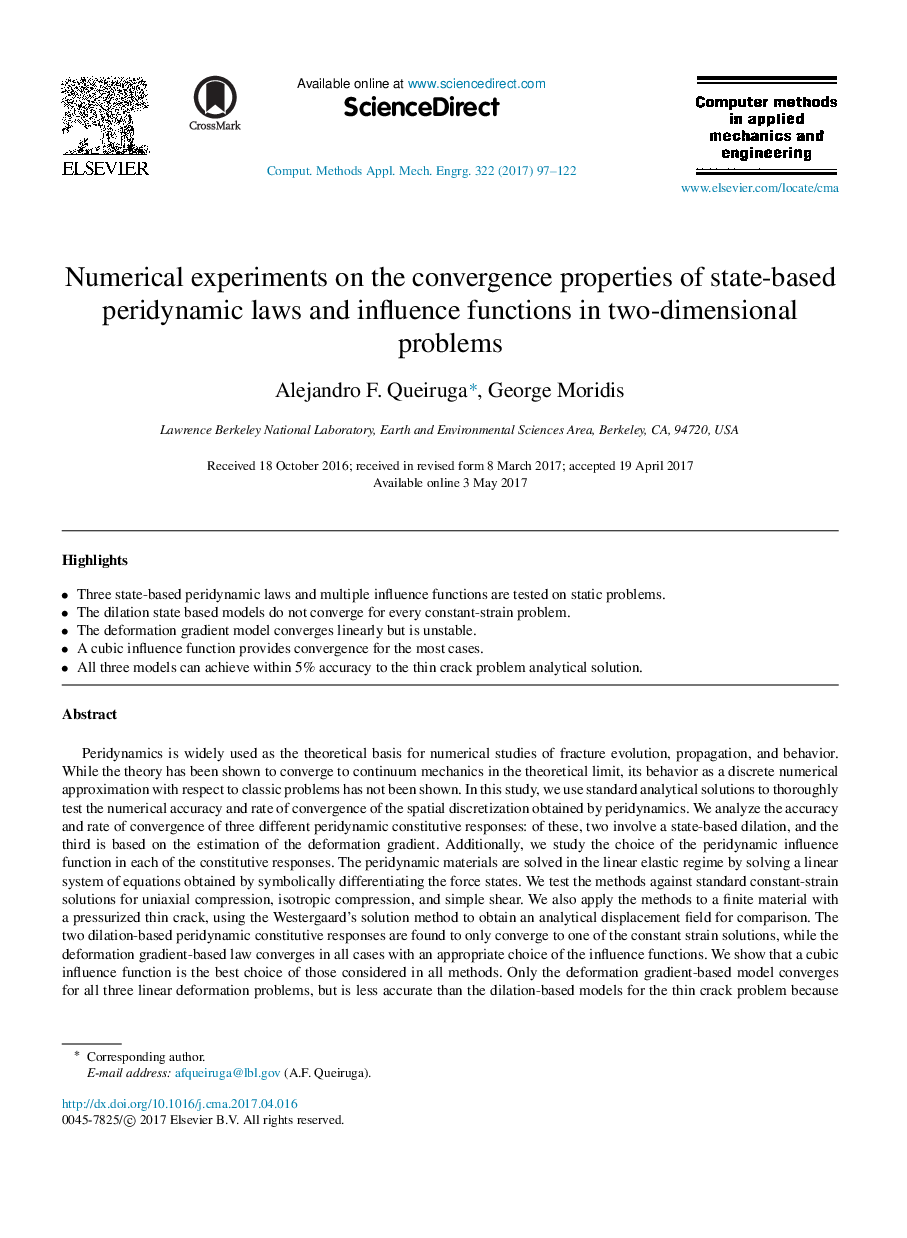| کد مقاله | کد نشریه | سال انتشار | مقاله انگلیسی | نسخه تمام متن |
|---|---|---|---|---|
| 4963731 | 1447413 | 2017 | 26 صفحه PDF | دانلود رایگان |
عنوان انگلیسی مقاله ISI
Numerical experiments on the convergence properties of state-based peridynamic laws and influence functions in two-dimensional problems
ترجمه فارسی عنوان
آزمایش های عددی بر خواص همگرایی قوانین پریدینامیکی مبتنی بر حالت و توابع نفوذ در مشکلات دو بعدی
دانلود مقاله + سفارش ترجمه
دانلود مقاله ISI انگلیسی
رایگان برای ایرانیان
کلمات کلیدی
پریدینامیک، مکانیک شکست خطی، همگرایی،
موضوعات مرتبط
مهندسی و علوم پایه
مهندسی کامپیوتر
نرم افزارهای علوم کامپیوتر
چکیده انگلیسی
Peridynamics is widely used as the theoretical basis for numerical studies of fracture evolution, propagation, and behavior. While the theory has been shown to converge to continuum mechanics in the theoretical limit, its behavior as a discrete numerical approximation with respect to classic problems has not been shown. In this study, we use standard analytical solutions to thoroughly test the numerical accuracy and rate of convergence of the spatial discretization obtained by peridynamics. We analyze the accuracy and rate of convergence of three different peridynamic constitutive responses: of these, two involve a state-based dilation, and the third is based on the estimation of the deformation gradient. Additionally, we study the choice of the peridynamic influence function in each of the constitutive responses. The peridynamic materials are solved in the linear elastic regime by solving a linear system of equations obtained by symbolically differentiating the force states. We test the methods against standard constant-strain solutions for uniaxial compression, isotropic compression, and simple shear. We also apply the methods to a finite material with a pressurized thin crack, using the Westergaard's solution method to obtain an analytical displacement field for comparison. The two dilation-based peridynamic constitutive responses are found to only converge to one of the constant strain solutions, while the deformation gradient-based law converges in all cases with an appropriate choice of the influence functions. We show that a cubic influence function is the best choice of those considered in all methods. Only the deformation gradient-based model converges for all three linear deformation problems, but is less accurate than the dilation-based models for the thin crack problem because of instabilities. We demonstrate an ad hoc smoothing technique based on the influence function that is able to alleviate these instabilities and improve the accuracy of the deformation gradient-based model.
ناشر
Database: Elsevier - ScienceDirect (ساینس دایرکت)
Journal: Computer Methods in Applied Mechanics and Engineering - Volume 322, 1 August 2017, Pages 97-122
Journal: Computer Methods in Applied Mechanics and Engineering - Volume 322, 1 August 2017, Pages 97-122
نویسندگان
Alejandro F. Queiruga, George Moridis,
